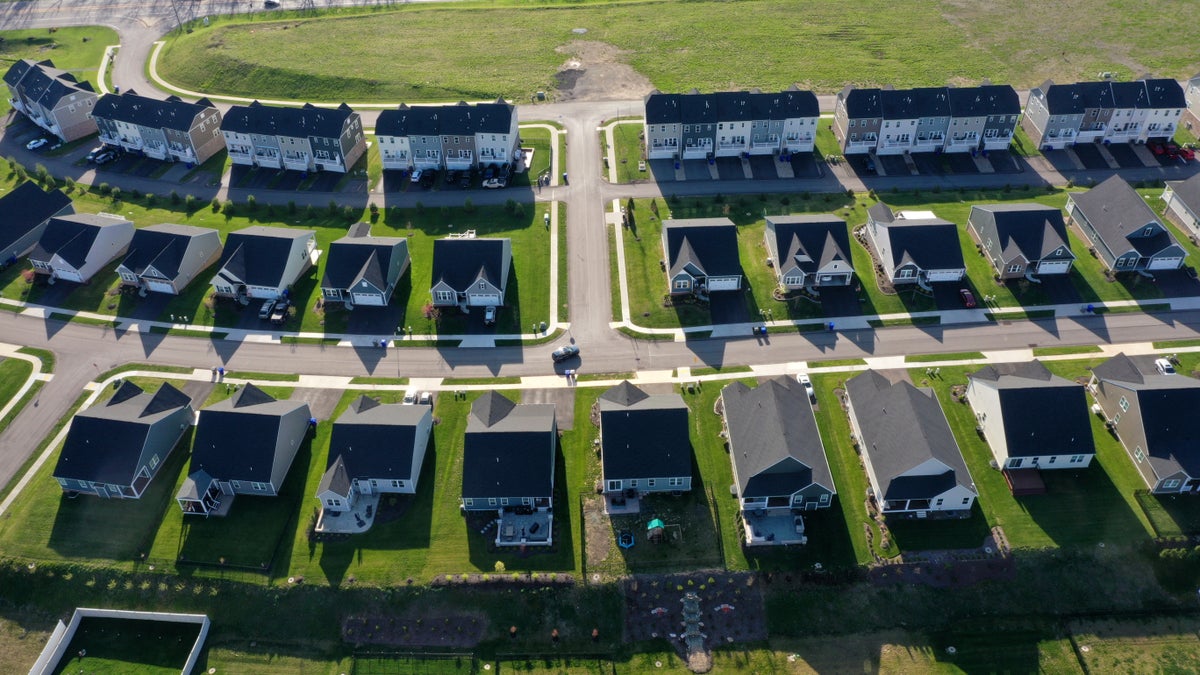
The average long-term U.S. mortgage rate fell this week to its lowest level in five weeks, welcome news for house hunters looking for an edge as they navigate a housing market constrained by a near-historic low number of homes for sale.
Mortgage buyer Freddie Mac said Thursday that the average rate on the benchmark 30-year home loan fell to 6.35% from 6.39% last week. The average rate a year ago was 5.30%.
The average benchmark rate has now edged lower seven of the last nine weeks since reaching a high for this year of 6.73% in early March.
“This week’s decrease continues a recent sideways trend in mortgage rates, which is a welcome departure from the record increases of last year,” said Sam Khater, Freddie Mac’s chief economist. “While inflation remains elevated, its rate of growth has moderated and is expected to decelerate over the remainder of 2023. This should bode well for the trajectory of mortgage rates over the long-term.”
High rates can add hundreds of dollars a month in costs for homebuyers on top of already high home prices. The elevated rates combined with a stubbornly low inventory of homes on the market have weighed on U.S. home sales this spring homebuying season.
Sales of previously occupied U.S. homes fell 22% in the 12 months ended in March, marking eight straight months of annual sales declines of 20% or more.
“The decline in mortgage rates is good news for prospective homebuyers, but housing supply is still too low in many parts of the country,” said Bob Broeksmit, CEO of the Mortgage Bankers Association. “Housing construction has slowed, and some would-be sellers are delaying decisions because of economic uncertainty and an unwillingness to give up their low-rate mortgage.”
Many prospective homebuyers have been pushed to the sidelines during the past year as the Federal Reserve cranked up its main borrowing rate in a bid to tamp down persistent, four-decade high inflation.
The government reported this week that consumer prices, a key barometer of inflation, rose 4.9% in the 12 months ended in April. That’s down significantly since peaking at 9.1% in June, but remains well above the Fed’s target level.
The Fed has raised its benchmark interest rate 10 times in 14 months. At its meeting of policymakers last week, the central bank signaled that it could finally pause its yearlong campaign of rate hikes, though a pause would likely only nudge mortgage rates slightly lower.
Shifts in the Fed’s short-term lending rate don’t directly affect mortgage rates, but they do influence the yield on 10-year Treasury bonds, which lenders use as a guide to pricing home loans. That’s because higher rates push bonds prices lower, which then causes their yield to go up. Investors’ expectations for future inflation and global demand for U.S. Treasurys also influence mortgage rates.
The average rate on 15-year fixed-rate mortgages, popular with those refinancing their homes, slipped this week to 5.75% from 5.76% a week earlier.







